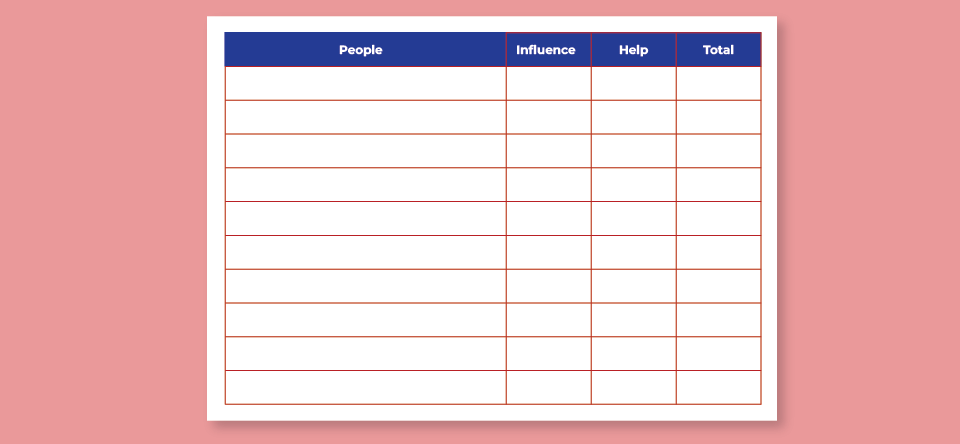We also talk about 5 ways you can do thought leadership content, and why you should sell your product before it exists.
February 17, 2025 | #023 | Free Version
Hi friend and happy Wednesday!
As a startup, you need virality. It’s what helps you break through the noise and reach escape velocity.
In the past, many startups relied on paid channels for growth. Booking.com, Credit Karma, TikTok, and Shein all scaled this way.
But paid growth is now much harder and more expensive. Unless you have millions to spend each month like TikTok, reaching the top of app stores is nearly impossible.
That’s why you need to focus on virality.
Viral boosts rely on luck. You create a great ad or tool and hope for the best. But you never know how people will react. If it works and goes viral, you might get your first 100 or 1,000 users.
Built-in virality, on the other hand, is engineered. The best companies create growth loops that continuously bring in new users. They usually use financial incentives to do that.
👉 In its early days, Uber gave users $10 for referring a friend.
👉 Airbnb gave $25 in travel credit for referring a guest and $75 for referring a host. Upon launch, referrals outperformed all other channels. It drove 900% growth year-over-year.
👉 Language learning platform Duolingo allows users to share a signup link with friends. If someone signs up, both get access to premium features.
👉 Meditation platform Calm allows users to gift friends a 30-day premium pass. It’s a win-win. Their friends get a premium gift and users feel good for sharing.
👉 Food-ordering SnackPass app went viral by letting users “gift” food to friends. Send a burger to your crush, they’ll have to download the app to get it.
Virality doesn’t have to be expensive. You can create sustainable, built-in growth using smart product decisions.
Many entrepreneurs think that if they just put their product out there, it’ll sell itself.
If you have an idea for a startup, you know what problem you are going to fix for your future customers. You know what you need to build to fix their pain.
Now the most critical information to build the right solution comes from the sales process. Is this problem acute enough that they will pay? How much will they pay? Is it urgent they solve it? Do they need it right now or can it wait a year or two?
If you have spent a year of your life building something you cannot sell, there likely will not be enough time left to fix those problems before you run out of money.
Your product and your go-to-market strategy are inextricably linked. You must build both together.
If you are building a solution that your target customers cannot acquire easily today through other means, then you can sell a solution that does not yet exist. In most cases, walking in with some design prototypes, a slide deck, and a clear value proposition is enough.
You can validate that the value proposition meets their needs. You can validate that they are willing to spend money on it. You can validate that it is urgent enough for them to take action now.
The content marketing landscape is extremely crowded. You have to compete with billions of social media users to catch your audience’s attention.
You need content that will help you win the battle for your audience’s attention, consideration, and, above all, loyalty. And that’s what thought leadership content is all about.
Done right, thought leadership content is the single most brand-differentiating content marketing asset you can produce. But it takes more than just having an opinion.
To become a thought leader, you need to have a unique perspective backed by the credibility of your experiences and expertise. And you need to share those ideas with your industry.
Thought leadership content can help you be seen as a leading authority. People will see you as a source of relevant insights. Your competitors will envy you.
If you produce any type of content for social media, I highly suggest you do only these types of content:
Tell a story about yourself, what you’ve learned, and what brought you to where you are today, and you’ll have an amazing angle on thought leadership content.
Don’t be afraid of repeating yourself. Anything worth hearing will need to be heard again and again before it truly sinks in.
If you can pay attention to what’s happening around you and recognize what’s working and what’s not working, you can do analysis-based thought leadership content.
Write about any strongly held opinion you have that goes against the conventional wisdom of your industry or discipline.
Counter-narrative thought leadership is not about being contrarian for the sake of it. It’s not enough to be contrarian. It also has to ring true.
But keep in mind, this type of content only works if you have an established public profile. If not, you won’t be able to break through and get attention.
The more people use your product, the more other people also want to use your product, and the more valuable your product becomes. This is true for thought leadership content too.
Data is an extremely potent engine for generating top-tier thought leadership content.
But it’s not the data itself that creates thought leadership content. It’s the analysis and insights that data enables you to produce.
You don’t need to analyse huge amounts of data to create valuable content. Start small with some small insights from a survey or recent product test. And if you don’t have your own data, you can lean on third-party data.
In this book, Gottlieb shares a roadmap for building a personal brand and becoming a recognized expert in your field.
One thing I want to share is her strategy to get anything you want from people in 20 days or less.
Success in life and business depends on the help of others. This approach not only gets you the support you need but also helps you build lasting relationships.
“Start by believing this: you’re only one connection away from That Thing you want. Somewhere in your network is a link that will get you there. Write that goal at the top of your paper. I am going with “Be Featured on Forbes”
“Next, you’re going to draw four columns on your paper, and label them (see the above image).
“Under People, list 20 people in your life network who have a connection to your goal. List anyone you’ve ever met who has any kind of connection with your goal. Aunts, uncles, cousins, your sister’s ex-boyfriend. Their connection to your goal doesn’t have to be a great one. It can be wimpy or tenuous, or the person can be someone you haven’t spoken to in years. Don’t worry about any of the details yet; just focus on those people. Look at your phone contacts, social media connections, and high school yearbook if you need to.
“Under influence, on a scale of 1–10, rate each of the people on your list in terms of how influential they are. How many followers do they have on Twitter? How much power would they have to get you featured in Forbes? Let’s say your sister’s ex-boyfriend is a writer at Forbes, so you rate him a 10. Your best friend has 100,000 followers on Instagram, but her audience is way different from yours -she’d be rated more like a 4.
“In the Help column, rate each person on a scale of 1–10 based on the following question: How likely is this person to help me? Think in terms of your relationship and how much value you’ve provided to them in the past. Your sister’s ex? Probably a 1 or 2, especially if you haven’t spoken to him since their breakup, but your best friend scores a 10. Likewise, a new co-worker you met just a week ago probably scores a lot lower than a professional contact you’ve been helping to promote for years.
“In the final column, add up the scores from the middle two columns, and then sort these scores in order, so the highest totals are at the top, and the lowest are at the bottom.
“The people at the top of the list, with totals of 18–20, are your golden geese. These are the people who both have influence and are likely to want to help you on this specific goal, so you can reach out to them for help – right now if you want!
“But those people a little further down the list, especially the ones with lower “help” scores, aren’t well positioned for you to ask them for help. So instead of asking them for anything, find a way to do one thing that provides value for them.
“By using this Top 20 tool as a guide, you can start asking for help and helping others, bringing those numbers up until you have a strong, powerful network that is not just able, but practically begging to help you achieve your goal.”




